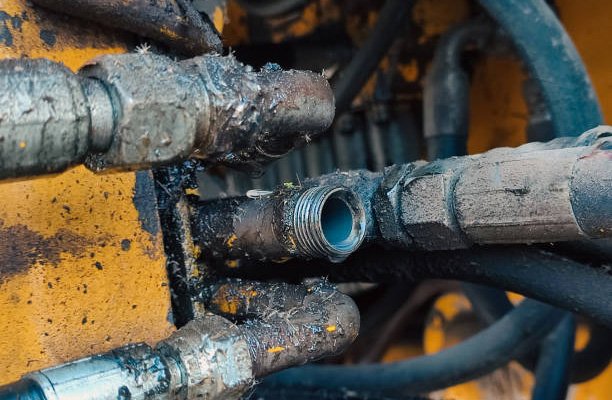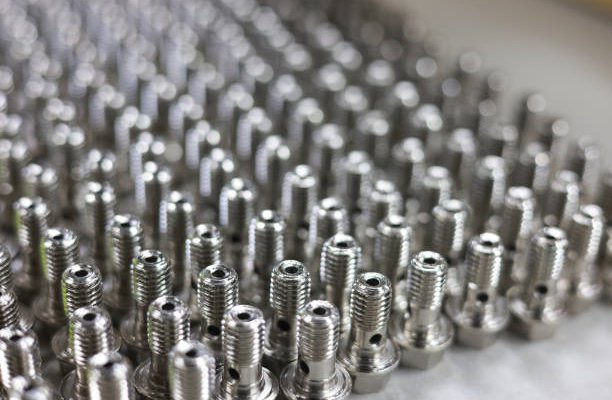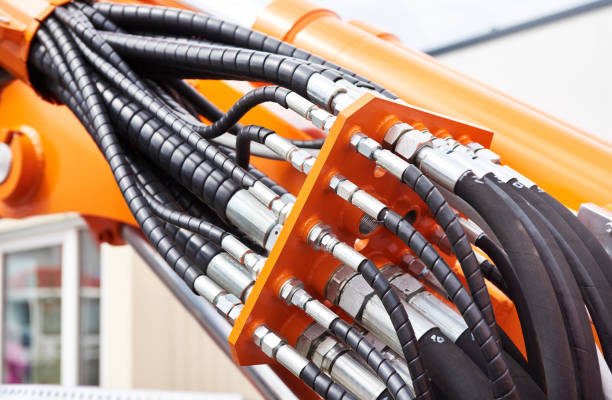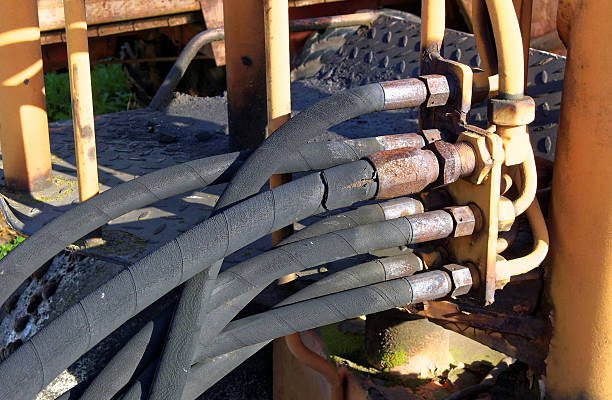Introduction to Hydraulic System Failures
Hydraulic systems are the backbone of many industries—construction, mining, aviation, agriculture, marine, and even automotive. These systems rely on pressurized fluid to transmit power, enabling machines to lift, push, and move with great force and precision. When functioning correctly, they are efficient and reliable. But when something goes wrong, hydraulic system failures can lead to expensive downtime, reduced productivity, and even safety hazards.
Unlike mechanical failures that often show gradual wear, hydraulic system issues can appear suddenly and without warning. A minor leak or contaminated fluid can escalate into a full-blown system breakdown if left unchecked. That’s why it’s crucial to recognize the most common hydraulic system failures and learn how to fix them quickly.
This article covers the top causes of hydraulic system failures, detailed explanations of how they occur, and proven solutions to fix them. We’ll also share preventive maintenance strategies and expert tips to extend the lifespan of your hydraulic equipment.
Common Causes of Hydraulic System Failures
Before exploring individual failures, it’s essential to understand the root causes behind them. Hydraulic systems are intricate, and multiple factors contribute to malfunctions. Below are the most common culprits:
Contamination in Hydraulic Fluids
Hydraulic fluid is the lifeblood of the system. Unfortunately, it’s also the most vulnerable. Dust, dirt, water, and even tiny metal shavings can enter the fluid. This contamination leads to abrasion, clogging, and premature wear on valves, pumps, and actuators. In fact, research suggests that up to 80% of hydraulic failures are caused by fluid contamination.
Air and Water Ingress
Air bubbles or water entering the hydraulic lines create severe issues. Air leads to cavitation, which causes loud knocking noises, reduced pressure, and eventual damage to pumps and valves. Water, on the other hand, reduces lubrication, causes rust, and lowers the fluid’s efficiency.
Overheating Issues
Hydraulic fluid must remain within a specific temperature range to work effectively. When overheated, fluid viscosity drops, leading to metal-to-metal contact, seal damage, and reduced efficiency. Overheating often stems from blocked coolers, overworked pumps, or poor ventilation.
Incorrect Hydraulic Fluid Use
Not all hydraulic fluids are the same. Using the wrong oil type—or mixing different types—can alter fluid viscosity, reduce lubrication, and lead to seal swelling or shrinkage. Manufacturers specify the correct fluid for a reason, and ignoring these recommendations often results in premature system wear.
Seal and Hose Failures
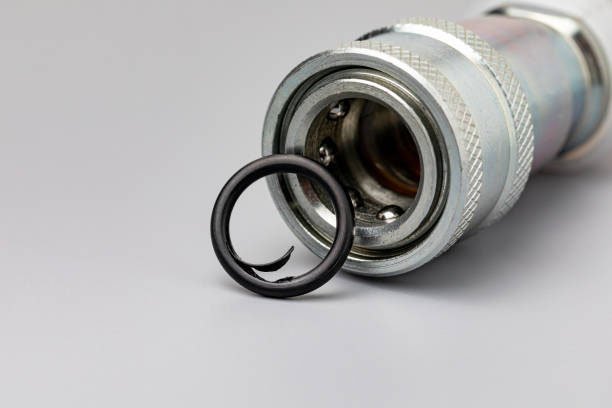
Seals and hoses bear the brunt of high pressure and extreme conditions. Over time, they crack, loosen, or burst, causing leaks. These failures not only reduce efficiency but can also pose safety risks if high-pressure fluid escapes unexpectedly.
Pump and Motor Malfunctions
The pump is the heart of the hydraulic system, and motors drive many components. If either fails, the system grinds to a halt. Causes include contaminated oil, cavitation, overheating, and misalignment. Since pumps and motors are costly, proper care is essential.
Top Hydraulic System Failures Explained
Now that we’ve looked at the root causes, let’s dive into the seven most common hydraulic system failures and how they manifest in real-world scenarios.
Failure #1: Fluid Contamination
- Symptoms: Reduced system efficiency, increased noise, clogged filters, and premature wear of components.
- Why it Happens: Dirt, water, or metallic debris infiltrates the hydraulic oil, usually through poor filtration, dirty reservoirs, or improper maintenance.
- Consequences: Faster wear on pumps and valves, higher risk of catastrophic system breakdown.
How to Fix:
- Drain contaminated oil and replace with clean fluid.
- Install or upgrade filtration systems.
- Conduct regular oil sampling to detect contamination early.
Failure #2: Cavitation and Aeration
- Symptoms: Loud knocking noises, vibration, frothy or milky oil, and sudden drops in hydraulic performance.
- Why it Happens: Cavitation occurs when air pockets collapse inside the fluid, often caused by clogged filters, restricted suction lines, or low fluid levels. Aeration happens when external air leaks into the system.
- Consequences: Severe pitting on metal surfaces, pump damage, loss of pressure, and eventual system failure.
How to Fix:
- Seal suction leaks.
- Maintain adequate fluid levels.
- Ensure suction lines are unobstructed.
- Replace worn-out seals and fittings.
Failure #3: Overheating of Hydraulic Oil
- Symptoms: Burnt oil smell, darkened oil, sluggish operation, and frequent component failures.
- Why it Happens: Overloaded pumps, blocked coolers, or incorrect fluid types reduce cooling efficiency.
- Consequences: Oil breakdown, seal damage, increased component friction, and permanent pump wear.
How to Fix:
- Monitor and maintain proper fluid levels.
- Clean and service hydraulic coolers regularly.
- Reduce system load or duty cycle.
- Switch to manufacturer-recommended hydraulic oil.
Failure #4: Seal and Hose Leakage
- Symptoms: Visible oil leaks, sudden loss of system pressure, messy hydraulic lines, and frequent need to top up fluid levels.
- Why it Happens: Seals and hoses are constantly exposed to high pressure, heat, and environmental conditions. Over time, rubber hardens, cracks, or swells due to chemical incompatibility. Improper installation or physical abrasion also accelerates hose wear.
- Consequences: Reduced system efficiency, increased maintenance costs, potential safety hazards from high-pressure fluid injection, and environmental risks due to oil spills.
How to Fix:
- Replace damaged hoses and seals with manufacturer-approved parts.
- Inspect hoses for cuts, abrasions, or bulges.
- Ensure proper clamping and routing of hoses to avoid rubbing against surfaces.
- Avoid mixing incompatible hydraulic fluids that degrade seal materials.
Failure #5: Hydraulic Pump Failure
- Symptoms: Reduced flow, whining or grinding noises, erratic pressure levels, and overheating of the pump casing.
- Why it Happens: Pumps fail when subjected to contamination, cavitation, improper lubrication, or excessive heat. Running pumps at higher-than-designed pressure levels also shortens their lifespan.
- Consequences: Since pumps are the “heart” of hydraulic systems, failure results in complete shutdown of operations. Repairs can be costly and time-consuming, leading to production delays.
How to Fix:
- Regularly check for fluid contamination and replace filters.
- Ensure suction lines are airtight and free from restrictions.
- Use proper lubrication and fluid levels.
- Don’t exceed manufacturer-recommended pressure ratings.
- Rebuild or replace the pump if significant wear is detected.
Failure #6: Pressure Loss & System Inefficiency
- Symptoms: Machinery feels sluggish, cylinders fail to extend or retract fully, and operators notice a gradual drop in power output.
- Why it Happens: Pressure loss often results from internal leaks, worn components, cracked hoses, or malfunctioning relief valves. Incorrect system calibration also causes inefficiency.
- Consequences: Loss of hydraulic power reduces productivity and stresses other system components, leading to secondary failures.
How to Fix:
- Check relief valves and calibrate them correctly.
- Inspect hoses, seals, and connections for leaks.
- Replace worn cylinders, valves, or pumps.
- Monitor system pressure regularly with calibrated gauges.
Failure #7: Component Wear & Tear
- Symptoms: Gradual system inefficiency, increased vibration, noisy operation, and frequent breakdowns.
- Why it Happens: Continuous operation at high loads and pressures causes natural wear on moving components like valves, pistons, and gears. Lack of preventive maintenance accelerates the process.
- Consequences: If ignored, minor wear turns into catastrophic failure requiring expensive replacements.
How to Fix:
- Schedule regular inspections and lubrication.
- Replace worn parts proactively before they fail completely.
- Train operators to use equipment within its design limits.
- Consider upgrading to stronger materials or modern components in high-stress systems.
How to Fix Hydraulic System Failures (Step-by-Step Approach)
Rather than reacting to failures as they happen, operators and technicians should follow a systematic approach:
Step 1: Diagnose the Problem Early
- Listen for unusual noises, vibrations, or sudden performance drops.
- Use thermal cameras or pressure gauges to pinpoint overheating or leaks.
- Conduct fluid sampling to detect contamination before it spreads.
Step 2: Fluid Maintenance & Filtration
- Always use clean, high-quality hydraulic oil.
- Install advanced filtration systems that capture both large and microscopic contaminants.
- Change filters and oil at manufacturer-recommended intervals (or sooner in harsh conditions).
Step 3: Proper Cooling System Management
- Monitor system temperatures with digital sensors.
- Clean coolers and radiators regularly to prevent blockages.
- Avoid extended heavy-duty cycles that push the system beyond safe temperature ranges.
Step 4: Replacing Seals and Hoses
- Use OEM (Original Equipment Manufacturer) seals and hoses for compatibility.
- Replace hoses showing cracks, bulges, or leaks immediately.
- Store hoses properly to avoid premature degradation from UV exposure or heat.
Step 5: Pump & Motor Repair Techniques
- Disassemble and clean pumps showing early signs of wear.
- Replace bearings, seals, and gears before failure spreads to other parts.
- Align pump shafts correctly to prevent uneven wear.
Step 6: Preventing Cavitation
- Keep suction lines airtight and free from restrictions.
- Maintain proper fluid viscosity as recommended by the manufacturer.
- Monitor pump inlet pressure to ensure cavitation doesn’t occur.
Preventive Maintenance for Hydraulic Systems
Hydraulic failures often happen not because of design flaws, but because of neglected maintenance. Preventive maintenance is the best way to reduce downtime, extend component life, and save money on costly repairs.
Routine Inspections
- Perform daily walk-around checks on hoses, seals, and fittings.
- Look for leaks, cracks, or oil residue around connection points.
- Inspect hydraulic cylinders for scratches or scoring.
Regular Oil Sampling & Analysis
- Take periodic oil samples and send them for laboratory testing.
- Oil analysis detects contamination, moisture, and viscosity changes before problems escalate.
- Use oil condition monitoring sensors for real-time updates on oil quality.
Proper System Calibration
- Hydraulic systems rely on precise pressure and flow control.
- Over time, valves and pumps drift from their calibration settings.
- Regularly calibrate relief valves, pressure regulators, and flow controls to match manufacturer specifications.
Scheduled Part Replacements
- Seals, hoses, and filters have a finite lifespan—even if they look fine.
- Replace them based on hours of operation, not just visible condition.
- Always keep spare hoses and seals on hand to minimize downtime.
Expert Tips to Increase Hydraulic System Lifespan
Extending the life of a hydraulic system isn’t only about fixing problems when they occur. It’s also about adopting smart practices that maximize efficiency and reliability.
Choosing the Right Hydraulic Fluid
- Follow the OEM (Original Equipment Manufacturer) recommendations.
- Ensure the oil has the correct viscosity for your operating temperature range.
- Never mix different types of hydraulic oil unless specifically approved.
Training Operators on Best Practices
- Many hydraulic failures stem from operator error.
- Train staff to:
- Warm up hydraulic systems in cold weather.
- Avoid overloading machinery.
- Report unusual noises, leaks, or vibrations immediately.
Using Advanced Monitoring Tools
- Modern hydraulic systems can be equipped with sensors that monitor:
- Oil temperature.
- Pressure variations.
- Contamination levels.
- Investing in IoT-enabled monitoring tools provides early warnings and reduces unexpected failures.
Conclusion
Hydraulic systems are powerful and reliable, but like all machines, they can fail if not cared for properly. The most common problems—such as contaminated oil, air in the system, overheating, leaking hoses, failing pumps, and pressure loss—can cause serious downtime and costly repairs.
The good news is that most of these failures are easy to prevent with the right steps:
- Keep hydraulic oil clean and at the right level.
- Check hoses and seals regularly for leaks.
- Watch for signs of overheating or unusual noises.
- Replace worn parts before they break completely.
By following these simple practices, you can keep your hydraulic system running smoothly, reduce breakdowns, and save money on repairs.
FAQs
Here are some of the most commonly asked questions operators and technicians have about hydraulic systems:
Q1: What’s the most common cause of hydraulic system failure?
Contaminated fluid is the leading cause, responsible for up to 80% of all failures.
Q2: How do I know if my hydraulic pump is failing?
Look for whining noises, overheating, reduced flow, or fluctuating pressure.
Q3: How often should I replace hydraulic oil?
Typically every 2,000 operating hours, but frequency depends on contamination levels and manufacturer guidelines.
Q4: Can overheating permanently damage hydraulic systems?
Yes. Prolonged overheating causes oil breakdown, seal failure, and pump wear.
Q5: How do I prevent cavitation in hydraulic systems?
Maintain proper fluid levels, ensure airtight suction lines, and avoid clogged filters.
Q6: Are hydraulic hose leaks dangerous?
Absolutely. High-pressure fluid can penetrate skin and cause serious injuries. Always use proper safety gear and fix leaks immediately.

